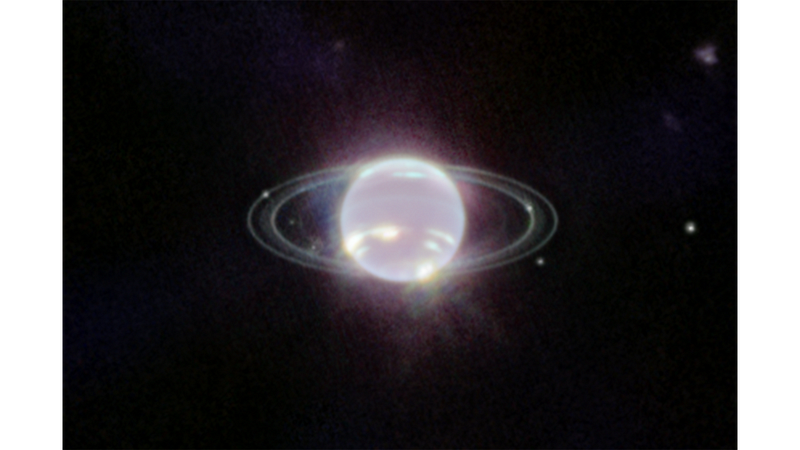The Rings of Neptune
Stunning images of a lesser-known ringed planet
Did you know that Neptune has rings? Well, now you do. The James Webb Space Telescope has captured stunning images of the planet that illuminate its rings, which previously were too thin and faint to capture clearly.
The furthest planet from the sun has narrow bands of stardust. Astronomers already knew this, but it's certainly a surprise for the casual space enthusiast.
The James Webb telescope obtained these images using its Near-Infrared Camera (NIRCam) to capture reflected light at infrared wavelengths. This gives Neptune a ghostly, colorless look that differs from the ice-blue image many of us have. This image is a partial fulfillment of the Webb mission of providing a completely new perspective of our cosmos out to the edge of our visible universe.
“It has been three decades since we last saw these faint, dusty rings, and this is the first time we’ve seen them in the infrared,” Heidi Hammel, Webb interdisciplinary scientist for solar system observations and vice president for science at the Association of Universities for Research in Astronomy, said in a statement.
How long have we known about Neptune’s rings? A look at astronomical history will help. Since 1977, we’ve known that Uranus has rings from ground-based observations. We then learned the same about Jupiter through the Voyager 2 mission in 1979.
It was theorized that Neptune likely possessed rings, but that they were thin wisps in comparison to the more conventionally observed rings of the other gas giants. This was confirmed by the same Voyager 2 spacecraft in 1989, when it finally reached Neptune. That 33-year-old image below, produced by Voyager, was our most detailed view of Neptune’s ring system until now.
No spacecraft has visited Neptune since Voyager 2, and not even the Hubble Space Telescope managed to produce a better image. However, the Webb telescope is far more powerful than Hubble and has captured both the sharp outlines of the planet’s rings and the granular space dust within the rings.
What can other aspects of the image tell us? The glowing white spots are clouds made of methane ice. We know this by the wavelength spectrum of the light producing the image of the white spots; think of it as a sort of signature that we can use to verify which elements or compounds are being seen in a particular part of an image.
The tiny specks of light surrounding the planet are its moons. There are seven of them in total. The large bluish dot is Triton, a globe covered in frozen nitrogen with the brightness of a star through the Webb telescope’s lens. The Voyager mission detected plumes of nitrogen gas erupting from ruptures in the moon’s surface, indicating that the moon is geologically active. Beneath the frozen nitrogen layer, it is believed that Triton’s crust consists mainly of a water-ice mix.

The new Neptune observations are the first of many by the Webb telescope of our own solar system. The telescope has also captured remarkable views of Jupiter, Mars, and Uranus. But, Mercury and Venus are off the table, as it would require changing Webb’s orientation away from Earth into space (not to mention that taking direct sunlight would fry the instruments).
But even with its lenses fixed away from the Sun, there is no doubt that more spectacular images of our solar system are on the way. Hopefully, we will continue to uncover the mysteries of our stellar neighborhood as we turn our sights further and further to the edge of our visible universe.




